Theatrical Fascism
By Spencer Copeland
Brightest Sun of Manhattan
Rhona Bitner’s photograph of Radio City captures its elegance, but it also highlights its vastness. The empty seats pictured here help to make it obvious that the building is meant to be viewed. Radio City is often thought of as the architectural manifestation of the “American Dream,” and it exudes capitalist born power. A quality that fits very well, seeing as it was built by John D. Rockefeller.
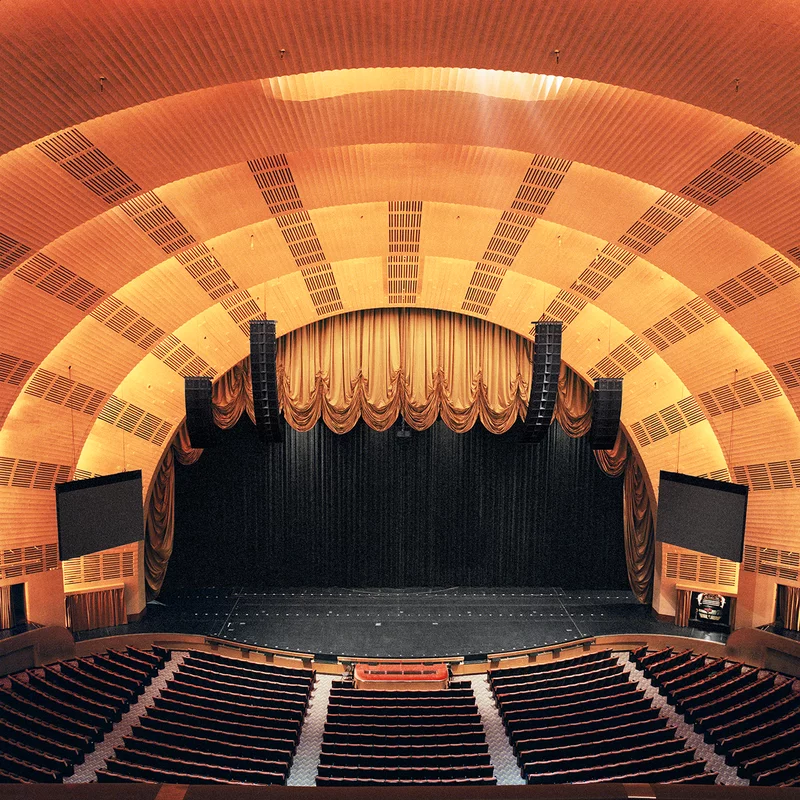

Fascism
Its Architecture, theater and how they combine
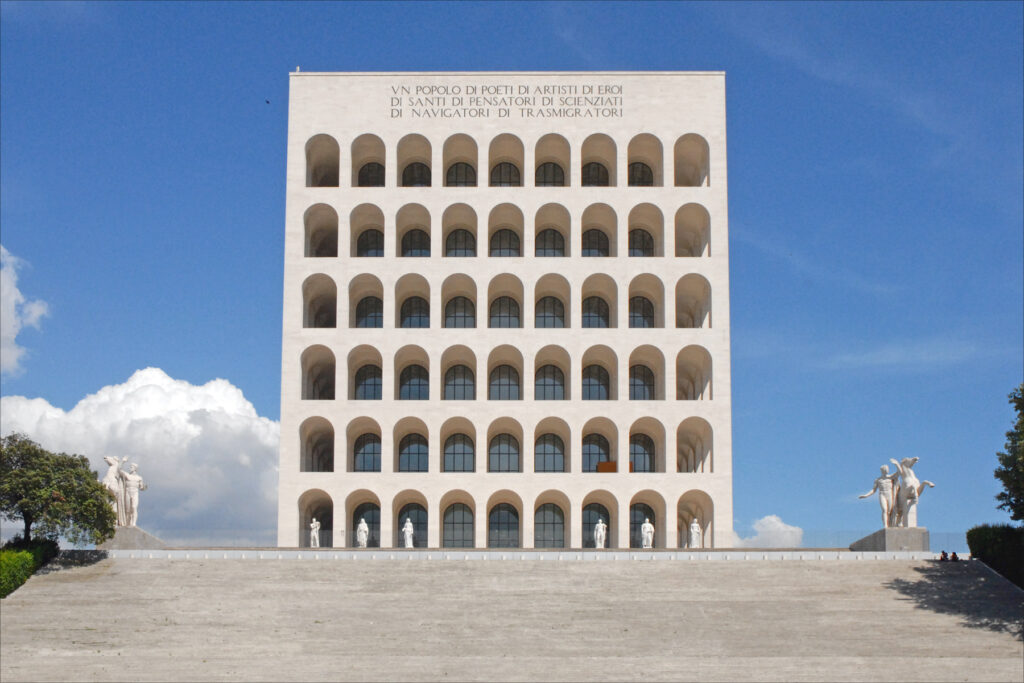
The square colosseum (left) in the EUR district of Rome serves as a perfect example of Mussolini’s vision for Fascist architecture. It’s impressively large, neoclassical, and dominating the landscape. The similarities between it and the colosseum (right) are easy to see.
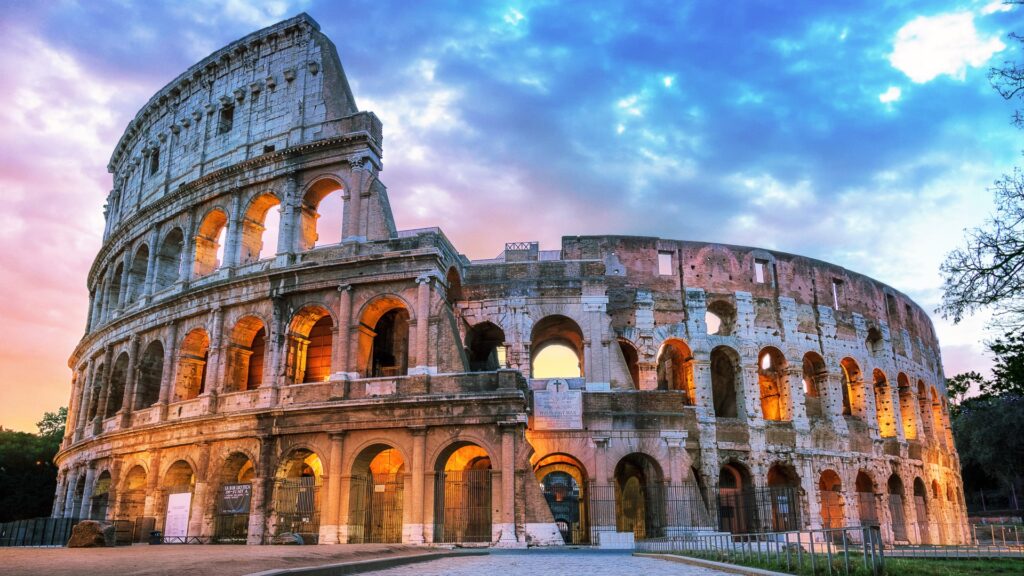
So what was Mussolini’s plan?
Mussolini thought that Theater was the most effective tool for spreading ideology. He thought that using the theater was essential in his propaganda plan for the nation, but how exactly did he plan to spread fascism through theater?
Mass Theater
Mass theater meant two intertwining ideas: Literally massive theater, and theater for the masses.
Distribute
Carro Di Tespi
Carro Di Tespi is the most influential example of “Theater for the Masses.” It was a traveling theater group that would go to rural towns, build a theater, perform, and then take down the theater. This ephemeral architecture is starkly different to the typical architecture exemplified by the square colosseum. This meant that the propaganda of theater could be distributed throughout Italy without needing lower class citizens to enter the city. It both gave impoverished Italians the ability to see plays and consume propaganda, and it kept Italian theaters securely for the upper class only. The Carro Di Tespi did not only go to rural towns though, it also performed in spaces like the colosseum.
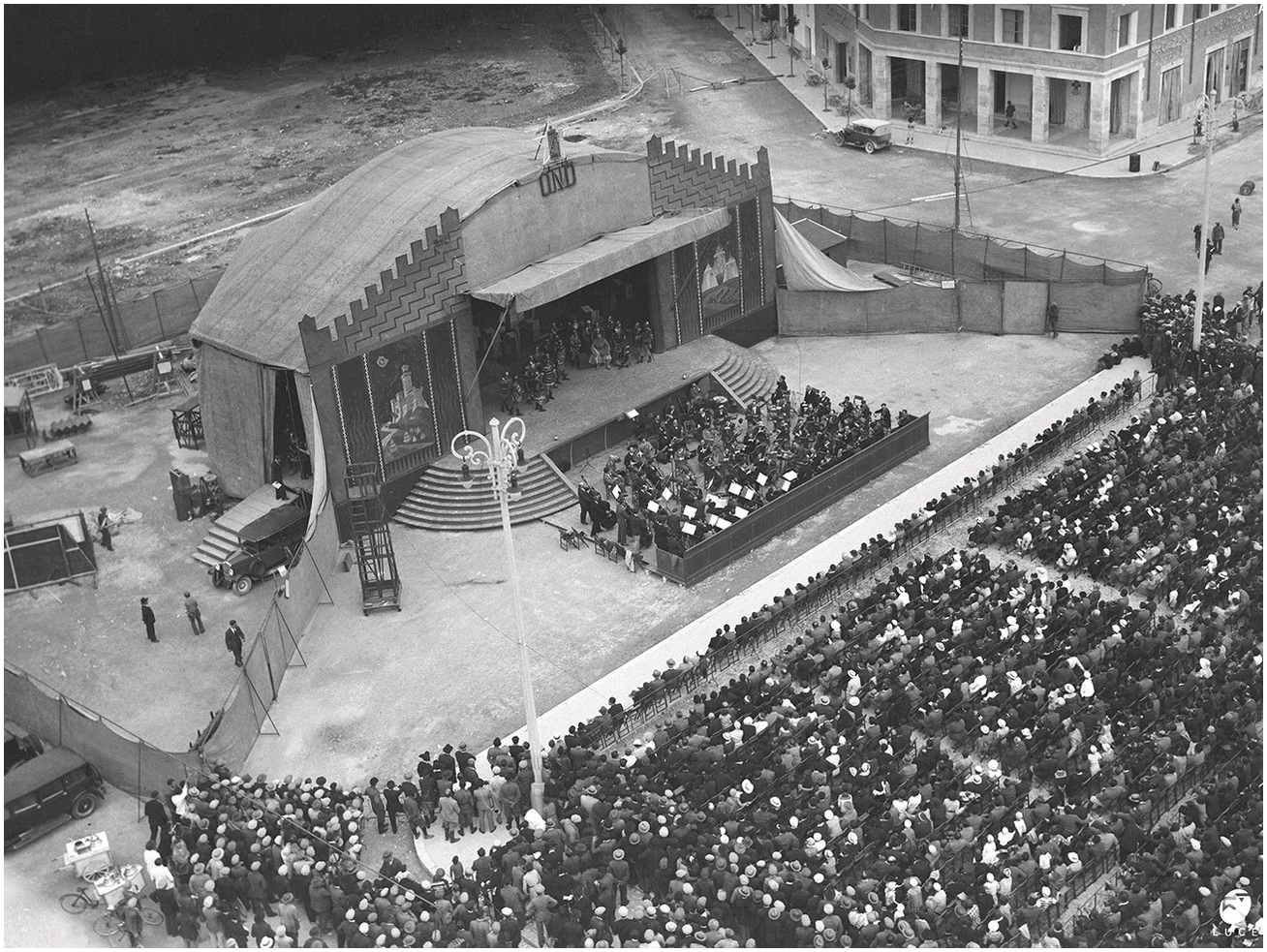

18 BL
The other concept was “Mass Theater,” which literally meant bigger theater. Mussolini wanted plays to have huge casts that would be played to huge audiences. A play with hundreds of actors and thousands of spectators, 18 BL is bigger than any other play produced in Italy before. It was staged outside in an area of Italy terraformed in order to put on the product of many different playwrights. The play was what Mussolini wanted, it was named after the Fiat 18bl, a car that was a strong nationalistic symbol, and it was a play about war and Italian success. The play, however, flopped. It was met with widespread disdain and the horrible reception plus the revenue lost meant that all plans for future “Mass Theater” productions were binned. Due to the multiple playwrights that did not seem to collaborate very much, the plot was confused and had multiple lapses in continuity. In addition, many of the audience members could not possibly consume the media, as the actors were so far away and the sound of guns and cars was so loud. 18 BL is the only example of this type of fascist mass theater, and though if you are interested I don’t recommend searching google images for 18 BL, the history of this play is truly fascinating and worth researching.
Mussolini also had a plan for the content of plays
How to spread Fascism through plays
Influence playwrights to become fascist.

Have popular fascist playwrights create popular plays

Subtly let fascism enter the masses through the entertainment given to them by fascist playwrights.
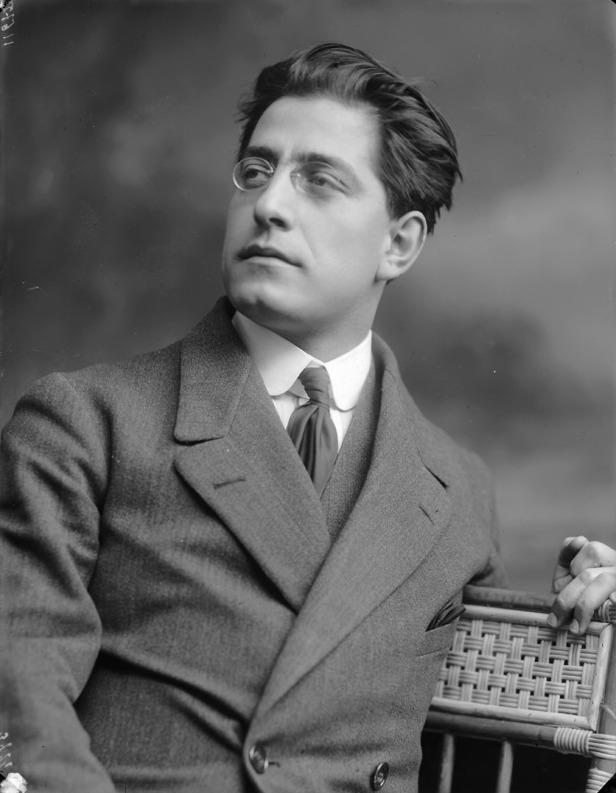
Giovacchino Forzano: Fascist Italian Playwright. He also was appointed head of the Carro Di Tespi for a section of its time.
The content of most fascist plays, then, was not actually obviously fascist. The plays were far more frequently popular types of plays for the time. Instead of being overtly fascist, they attempted to instill themes and characters that were thought of as “good” for fascism. The propaganda was aimed to create a sense of the themes and ideals of fascism, rather than simply be fascist in nature.
Bibliography
Berezin, Mabel. “The Organization of Political Ideology: Culture, State, and Theater in Fascist Italy.” American Sociological Review 56, no. 5 (1991): 639–51. https://doi.org/10.2307/2096085.
Berghaus, G. (Ed.). (1996). Fascism and theatre : comparative studies on the aesthetics and politics of performance in Europe, 1925-1945. Berghahn Books. https://doi.org/10.1515/9781785330476
Fiederer, Luke. “Ad Classics: Radio City Music Hall / Edward Durell Stone & Donald Deskey.” ArchDaily, July 29, 2016. https://www.archdaily.com/792104/ad-classics-radio-city-music-hall-edward-durell-stone-and-donald-deskey.
Luce Cinecittà, Archivio. “Il carro di Tespi lirico al Colosseo.” Youtube. Archivio Luce Cinecittà. June 15, 2012. https://www.youtube.com/watch?v=xkiwDCK2Sy4
Luce Cinecittà, Archivio. “Il discorso di Mussolini a Trieste del 18 settembre 1938.” Youtube. Archivio Luce Cinecittà. September 18, 2018. https://www.youtube.com/watch?v=IsoQdrnKDK4
Sartori, Andrea. “Patricia Gaborik. Mussolini’s Theatre: Fascist Experiments in Art and Politics.” Annali d’Italianistica 40 (2022): 519+. Gale Academic OneFile (accessed October 31, 2023). https://link.gale.com/apps/doc/A730340815/AONE?u=nysl_ce_hamilton&sid=bookmark-AONE&xid=bc374b7a.
TRUBIANO, FRANCA. “Fascist Architecture.” architecture-history. Architecture-History. Accessed October 31, 2023. http://architecture-history.org/schools/FASCIST%20ARCHITECTURE.html